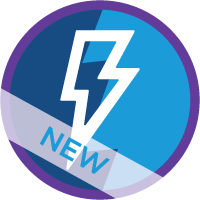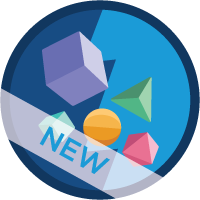The Lightning Experience Developer Trail takes you through 5 modules to show you an overview of the different points of view of the new Salesforce development approach:
- Lightning Experience Basics
- Lightning Experience Development
- Visualforce & Lightning Experience
- Lightning Components
- Lightning Design System
I consider it quite important to highlight that the Lightning Experience is not fully terminated and rolled out to the whole platform at the time of writing this post (September 2015), and even if it brings new capabilities that weren't available before, it is still "Work In Progress" and it doesn't support all the features that Salesforce Classic does at the moment.
In Salesforce's own words: "Lightning components are still in their infancy and not all the features you’re used to in Visualforce are fully supported yet."
Just be patient and let the Salesforce team do their job. We'll definitely be getting updates from them with the progress through the usual channels...
This is what you can expect from each of the Modules. As usual, you will earn some new badges and you can win up to 5800 points!
 Lightning Experience Basics
Lightning Experience BasicsFind out about what the Lightning Experience is and how it's different to Salesforce Classic. View examples of the look and feel of the new interface.
Get advice on how to decide whether the new experience is right for you.
Instructions on how to enable it in your ORG.
Lightning Experience Development

An overview of the impact of the new User Experience on the typical Developer tools, like Apex, the API, Visualforce, and others.
Recommendations on what technology you should use depending on the requirements of your application. One of the features from the Lightning Experience I'm more excited about is the fact that you don't have to worry about compatibility accross devices and browsers, it's all taken care of for you!
Guidance on what to do with Packaged applications or the Apps in the AppExchange to accommodate the new Lightning Experience.
 Visualforce & Lightning Experience
Visualforce & Lightning Experience
You will find out the ways in which you can keep using Visualforce within the Lightning Experience.
Set up your work environment for a better development experience: code editor, page viewers and review in multiple environments.
Discover how Visualforce pages behave when running in Lightning Experience and how to share them between both experiences, as well as the styling considerations to bare in mind.
 Lightning Components
Lightning Components
This module describes what Lightning Components are and how the new Lightning Components framework differs from the Visualforce one. Prepare for a good 4 hours of exciting training with this module, because this is where you will write some actual code and connect your Trailhead to your Developer ORG to create some Lightning Components.
An overview of the different techniques available for Lightning Components is given in this module: server-side and client-side controllers, Apex and JavaScript...
 Lightning Design System
Lightning Design System
This final module goes into the Design principals used in the Lightning Experience. You get introduced to the Block-Element-Modifier syntax (BEM) for styling your components.
Some explanations about the Grid System, that is a good way to understand the layout that your Lightning Components will use.
You will find out next the recommended ways of accessing your Data in Salesforce from your Lightning Components; and also how to include Avatars and Icons within your components.
The final activity of this module helps you build Record Home Page making use of several components!
And now you're all set to understand MOST of what people will be talking about at Dreamforce '15!
It was helpful for me, so I hope this is also of help for you.